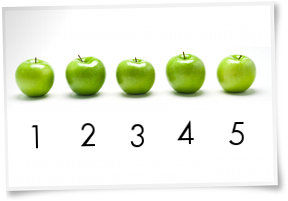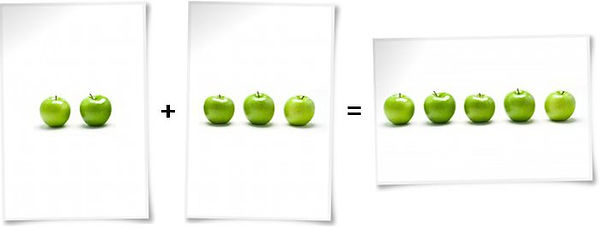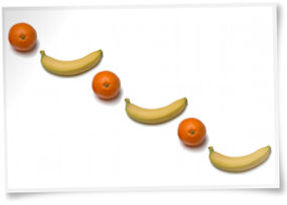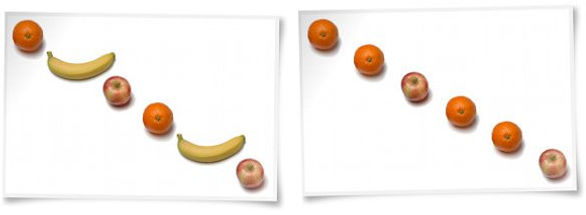
Assessing and Teaching Math
Development of Math Skills
Readiness for Number Instruction
Math and Number Awareness involves a variety of skills, including: 1) Numeral identification (recognizing all 10 numerals from 0 through 9 and knowing each numeral’s name); 2) Counting; 3) One-to-one correspondence; 4) Counting on; 5) Patterning recognition and creation; and 6) Sorting and classifying.
The Importance of Strong Math and Number Skills
Basic math and number concepts utilized in a preschool or kindergarten classroom set the foundation for learning more advanced math concepts. Early exposure to math and number activities will promote your child’s comfort with these skills. Also, additional opportunities to practice these skills will increase your child’s confidence when working with math and number concepts and will lead him to believe he is “good at math.” If your child does not become comfortable with math and number concepts at a young age, he will lack confidence in his abilities and may become hesitant as more advanced math concepts are introduced. When this happens, he may default to believing he is “bad at math” and he risks beginning a self-fulfilling cycle of failure.
Numeral Identification
The first step in Math and Number Awareness is learning what the 10 numerals (0 through 9) look like. This requires strong Visual Discrimination skills since many numerals (such as 6 and 9, or 1 and 7) look very similar. Once a child is able to recognize the 10 numerals and know each numeral’s name, he can develop an understanding of the amount each numeral represents.
Counting
When first learning to count, a child counts by rote memorization. This means he will likely be able to say the names of the numbers from 1 through 10 simply because he has memorized the order of the words, “one, two three ... ten.” However, he likely does not yet understand that 5 is 2 more than 3, for example.
One-To-One Correspondence
When counting, the concept of “one-to-one correspondence” is the understanding that each object being counted represents “one more.”
Before a child understands one-to-one correspondence, he will count by rote memorization. When asked to count a small group of objects, he will likely count quickly through the numbers he has memorized and randomly touch the objects being counted instead of touching and counting each object just once. For example, a child given five beads may automatically count aloud from 1 to 10 when asked to count the beads, pointing to random beads as he proudly shows how well he can “count.”
Counting On
“Counting on” allows a child to continue counting objects added to a previously counted group without recounting the entire group. For example, give your child two apples and ask him to count them. Then, give your child three more apples. Counting on would involve your child applying one-to-one correspondence to the additional three apples by counting “three, four, five” instead of restarting at one and recounting all five apples.
Counting on is an important skill because it is time-consuming and impractical to recount a group of items each time additional pieces are added.
Patterning recognition and creation
Understanding patterns is an underlying theme in preschool and kindergarten math lessons. A pattern is defined as any sequence that repeats at least twice. As a practical example, consider counting from one to one hundred by ones. When counting, there is a recurring pattern in which all digits rotate from 0 to 9 before restarting back at 0.
The first pattern that is introduced in the preschool classroom is called an AB pattern. This means that two different objects line up in an alternating pattern, such as: orange (A), banana (B), orange (A), banana (B), and so on.
As comfort with patterns grows, the patterns will become more complex, moving to an ABC pattern or an AAB pattern.
The ability to recognize, identify and create patterns not only supports learning in math but it also contributes to broader social development. Through an understanding of patterns, children are able to make predictions about what comes next. Just as a child can predict that a red bead will come next after seeing a string with a red bead, blue bead, green bead, red bead, blue bead, green bead pattern, a child will be able to make accurate predictions about other things or events that occur with regularity. For example, predicting what comes next after eating lunch (cleaning up) or after taking a bath (putting on clean clothes) will help a child maneuver more confidently in his environment.
Classifying and Sorting
Children are also introduced to sorting and classifying in preschool or kindergarten math lessons. These activities provide children with opportunities to develop logical reasoning skills as well as demonstrate divergent (independent) thinking.
For example, three different children will likely sort a pile of buttons of varying shapes, sizes, colors, and materials in three different ways. One child may put all the round buttons in one group and all the odd shaped buttons in a different group. A second child might put all the metal buttons in one group and all the plastic button in a different group. And a third child might sort the buttons according to color or size. The particular organizational system is not important. What is important is that each child accurately sorts according to his organization system and is able to explain his thought process.
Importance of Hands-On Learning
Math learning is most exciting for children when hands-on manipulatives (fancy teacher-speak for small objects that can be easily handled or manipulated) are incorporated. Manipulatives give children tangible representations of the otherwise abstract concepts related to numbers and counting. For example, when asking a child to count to 30, he may become lost or distracted halfway through. But, when you give the same child 30 small beans and ask him to count them, he will likely be able to apply one-to-one correspondence and accurately count all 30 beans.
Hands-on manipulatives are also essential when teaching patterning. Consider trying to explain pattern creation to your child without using hands-on manipulatives, by asking your child “red block, blue block, red block, blue block… what comes next?” Understandably your child probably did not memorize the order of words that you said and will struggle to answer correctly. By giving your child small red and blue blocks to place in order as you say the same pattern, “red block, blue block, red block, blue block,” you will increase the likelihood that he will be able to continue the pattern.





Assessment Considerations
Examining Math Errors
-
As an educator being able to determine the reasoning behind the student missing a question in mathematics is very important. You must understand that this information they are learning will be beneficial in their lives and it is your job to understand their errors and help them learn the correct method to figure the problem.
-
I believe making students write their work out helps you because you can check through their work and then later work with them to understand where they went wrong.
-
When considering younger students allowing them to use manipulatives to show their work may help you as an educator to show them how to work the problem.
Determining Level of Understanding
-
The best way for a teacher to measure the students understanding of a problem is for the student to explain their process to the teacher. For students to work on the more complicated problems and show the teacher their step by step procedure the teacher should get a fairly good idea of how well the student understands the topic. This particular method is best used when working on more difficult problems. As you are working with your student who has a disability it would be good to spend one-on-one tome with the student. See where they fully understand and parts that you may need to develop more for the student.
Determining Mastery Learning
-
Mastery learning can be defined as a strategy used to give students more than one time to demonstrate their level of mastery. This type of strategy is great for math instruction.
-
Benefit of mastery learning: it allows students several gains to achieve mastery, helps struggling students use enrichment activities.
-
Students who show mastery on a certain subject will move on with other enriching activities, while those students who do not show mastery will be provided with more instruction time.
Assessment of Math Instruction
-
Formal Math Assessment
-
In mathematics formal assessment is usually a written exam given at the end of a chapter or completion of a concept.
-
These tests are also known as standardized tests.
-
Formal math assessments are primarily administered to see where students rank throughout the district or state.
-
Often times they will be given to see what the student knows at a specific age or grade level.
-
Educators use formal assessment of the group or individual.
-
-
Informal Math Assessment
-
Informal assessment can take place at any time. Educators will often use checklists, student journals, or class discussions as a form of informal math assessment.
-
Observing a lot in the classroom I have witnessed a variety of informal assessment. Such as group work, students show step by step work, homework, or projects.
-
This method seems to be less intimidating to students; however educators can easily determine the student’s level of understanding and mastery of a subject through informal math assessments.
-
Research on Learning Problems Associated with Math
-
Learned Helplessness
-
A common term for learned helplessness is laziness. A big cause of learned helplessness is other people enabling them by doing tasks for them. We as teachers need to shy away from ever enabling our students to be lazy by aiding them too much. This is a hard thing to avoid, because it is sometimes faster or easier to just do it for them. I know that I will sometimes need to tell myself to remember that I am not helping them by doing it for them. This also sends a message to the students that we think they cannot do it. We need to portray to them that we know they can do it and that they will succeed without having to rely on others. Learned helplessness is a common theme in math.
-
-
Passive Learners
-
Students who are passive often feel like they cannot solve problems even if they have a solid basis for it already. For example, if a student already knows 4 x 5 = 20 and the teacher asks them what 5 x 5=, they will automatically say they do not know. The learners that do not act passively will apply their knowledge and add five more to 20. The students then perceive those who applied themselves as automatically knowing the problems and being smarter than them, when in actuality they just applied their knowledge instead of giving up right away.
-
-
Memory Problems
-
Math is a set of building blocks. Students need the fundamentals, subtractions, additions, etc. to be able to excel in the rest of their math endeavors. If the student has memory problems and cannot remember the fundamentals or what they were taught it makes it extremely difficult for them to progress in their learning. To help these students teachers can teach the students strategies for accessing and retrieving the information that they have stored away. The key to this is to keep the student positive and engaged. Sometimes the student can become extremely frustrated with the process of always starting over and we as teacher need to help them avoid this frustration.
-
-
Attention Problems
-
Attention problems occur in every subject, as do most of these problems, however, attention can be a detrimental problem in math. Math holds many multifaceted problems. A person must hold their attention long enough to get through the many steps that one problem has. If the student gets off track on one little step, the entire problem can be wrong. Attention problems that lead to wrong answers also lead to discouraged students. As a future teacher, I know that I will struggle with this problem amongst my students. I see it a lot in the classrooms now when I observe. The teacher has to constantly get the students back on track and she is always trying to get them to focus on their work instead of what is going on around the room. She becomes discouraged often when they ask her the directions again or how to do a problem after she had just told them. They struggle with attention a lot and I am going to have to figure out ways to help them stay on task. I have noticed that the more you engage every sense the student has the better luck you have of keeping them focused. If you have things for them to touch, smell, see, and move they tend to stay focused better.
-
-
Cognitive/Metacognitive Thinking Deficits
-
Metacognition is dealing with how the students monitor their own learning. This is seen in four main steps: 1. evaluating whether or not they are learning, 2. Employing needed strategies, 3. Recognizing successful and unsuccessful strategies, and 4. making appropriate changes. If a student does not meet all of the four steps they may have a metacognitive deficit. This can be very detrimental if not helped because math is a step by step process and learners need to be able to utilize the four steps. As a future teacher I am going to try and teach my students problem solving and organizational skills to help them reach higher metacognitive thinking skills.
-
-
Low Level of Academic Achievement
-
Students that have low levels of academic achievement often get discouraged easily. We as future teachers need to encourage them and find ways to help them succeed. Students with disabilities often take a longer time to process auditory and visual information. We need to allow them the time they need and help them overcome their barriers. I think that individualized learning is something that could really help in this area. If students are all expected to learn information at the same time and progress together they often feel like they are in competition and they become nervous or intimidated by other students, so they give up. If we implement individualized learning, the students are on their own schedules of learning and this allows for mastery and they do not become discouraged because of competition. I am going to have individualized learning in my future classroom.
-
-
Math Anxiety
-
Math anxiety can be a devastating thing for students. They can become so anxious that they are not functioning in math class anymore. This is a problem that can be solved with understanding teachers and supportive people in their lives. The best cure for this anxiety that students suffer from is success. If you help the student get a taste of success, they will tend to become less anxious and the more success they experience, the less anxious they become. I suffered from this in my upper level college math courses and it was a weird thing for me because I was always very good at math. I luckily had a wonderful teacher and he worked with me to help me overcome my anxiety. Without him I would have been a mess, but he realized it was happening right away and helped me solve my problems. I will always strive to help my future students like my professor did for me.
-
Research on Effective Math Instruction
-
Selecting Appropriate Mathematics Content
-
When it comes to math content the National Mathematics Advisory Panel has several important things to follow. They stress the importance of the success of students in Algebra and other advanced math courses. They also encourage the teachers to use research-based instructional strategies. Another key thing they stress is the importance of conceptual understanding, automatic recall of facts, and procedural fluency. The last thing that they say for selecting content is that the students must have a strong understanding and mastery of the fundamental math concepts.
-
-
Teaching the Acquisition of Math
-
Teaching the acquisition of math is not always easy. The beginning of teaching math is t teach the students to learn the fundamentals. Addition, subtraction, etc. Students learn best through visuals and things that they can physically touch, in my opinion. I will have objects that they will be able to move around and visually see things being added and subtracted. Manipulatives are great ways to learn math and I will be utilizing them in my future classroom.
-
-
Teaching Mastery
-
Teaching mastery of fundamental math skills is crucial for the students to be able to move to upper level math. The students need to master the fundamentals and be able to carry those skills over to new math. I will have to teach mastery of the fundamentals by using flashcards, tests, etc. Rocket math is what the school uses that I observe in to teach mastery. The students begin with a sheet of 80 problems and they start at letter A. They must finish all of one of the sides, so 40 problems, within a minute correctly to be able to proceed to the B sheet. They must work their way through the alphabet to receive a prize. This makes the students master their addition and subtraction facts with an incentive of a prize.
-
-
Teaching Problem Solving
-
Teaching problem solving skills is crucial for learning math. Students need to be able to work out problems on their own and if they have good problem solving skills they will be able to use their current knowledge to figure out new math problems. The strategies used to problem solve will come in handy for students for the rest of their lives. They will be able to conquer problems that they do not know by utilizing their skills and knowledge. Ways I will teach problem solving will be through implicit instruction. I will not always aid the students in each step of the problems. I want them to think about it first and ask each other to try and solve the problems before coming to me.
-
-
Teaching Generalization
-
Generalization is a great thing to learn for math. Students often have to generalize problems to try and apply their existing knowledge to new problems. The use of generalization is a great tool to have to conquer math problems. I will teach it by always asking them to go back to the basics and ask them what we know already and how we can apply that knowledge to the problem we are working on.
-
-
Using Explicit-Implicit Math Instruction
-
Explicit instruction is the more straight forward, follow the rules, kind of instruction. The teacher leads the instruction of the class and guides the students through the lessons. The students listen to the teacher for directions on what and how to do things and the students follow the instructions and abide by the rules. Implicit instruction is where the students learn by exploring and doing. A great example of implicit instruction is children learning to speak. The students learn by speaking and interacting with others. Math usually starts out as explicit learning and then as the child gains the fundamentals of math and progresses throughout the years they begin to use implicit instruction and strategies to figure out their multifaceted math problems.
-
-
Promoting a Positive Attitude toward Math
-
Promoting a positive attitude towards math will be extremely easy for me because I have always loved math. However, I do know that teachers that have negative attitudes towards math can have very negative effects on the students learning their math. The students take the teachers lead on most everything, and the students can always tell how the teacher feels about the subject. We as teachers need to be positive and uplifting and the students will follow our lead. How can we expect the students to be positive if we are not positive ourselves? We need to implement positive attitudes and encourage students to say “I can” instead of “I can’t.”
-
I had a really hard time getting my 6th Graders this year to enjoy math. They had such a bad attitude about it. Math was a dreaded time for the students and myself because I would just try so hard to get them to like it. I started a "Math Rewards" program with my students and they do not talk bad about math anymore! There are a few sad faces from time to time, but it is not like pulling teeth to get them to do math anymore. They have also improved in math ever since I had them talk positive about it.
Instructional Practices for Computation and Problem Solving
-
Two math facts programs
-
Concrete-Semiconcrete Abstract (CSA) Activities
-
Basic rules and algorithms
-
Problem-Solving Interventions
-
Life-Skills math
-
Calculators
-
Estimation
Difficulties with Math
Computational Weakness
Many students, despite a good understanding of mathematical concepts, are inconsistent at computing. They make errors because they misread signs or carry numbers incorrectly, or may not write numerals clearly enough or in the correct column. These students often struggle, especially in primary school, where basic computation and "right answers" are stressed. Often they end up in remedial classes, even though they might have a high level of potential for higher-level mathematical thinking.
Difficulty Transferring Knowledge
One fairly common difficulty experienced by people with math problems is the inability to easily connect the abstract or conceptual aspects of math with reality. Understanding what symbols represent in the physical world is important to how well and how easily a child will remember a concept. Holding and inspecting an equilateral triangle, for example, will be much more meaningful to a child than simply being told that the triangle is equilateral because it has three equal sides. And yet children with this problem find connections such as these painstaking at best.
Making Connections
Some students have difficulty making meaningful connections within and across mathematical experiences. For instance, a student may not readily comprehend the relation between numbers and the quantities they represent. If this kind of connection is not made, math skills may be not anchored in any meaningful or relevant manner. This makes them harder to recall and apply in new situations.
Incomplete Understanding of the Language of Math
For some students, a math disability is driven by problems with language. These children may also experience difficulty with reading, writing, and speaking. In math, however, their language problem is confounded by the inherently difficult terminology, some of which they hear nowhere outside of the math classroom. These students have difficulty understanding written or verbal directions or explanations, and find word problems especially difficult to translate.
Difficulty Comprehending the Visual and Spatial Aspects and Perceptual Difficulties
A far less common problem -- and probably the most severe -- is the inability to effectively visualize math concepts. Students who have this problem may be unable to judge the relative size among three dissimilar objects. This disorder has obvious disadvantages, as it requires that a student rely almost entirely on rote memorization of verbal or written descriptions of math concepts that most people take for granted. Some mathematical problems also require students to combine higher-order cognition with perceptual skills, for instance, to determine what shape will result when a complex 3-D figure is rotated.

